Pink Princess Philodendron plant is a rare, elegant vine just right for a stand out focal point in your home. The Philodendron pink princess is rather easy care once you learn what it needs. Enjoy the lovely pink variegations this plant is famous for.
What is so special about the Pink Princess philodendron? The Pink Princess philodendron expresses a rare and highly attractive variegation that cannot be reliably reproduced by seed. The color is very unique. Dark green (almost black at maturity) heart shaped leaves are splashed with bright pink variegations.
The Philodendron Pink Princess makes a lovely, showy plant for your home. All philodendrons are great indoor plants. They come in many forms and colorations. But the Princess is a truly regal vine with an unusual beauty almost never seen in the plant world.
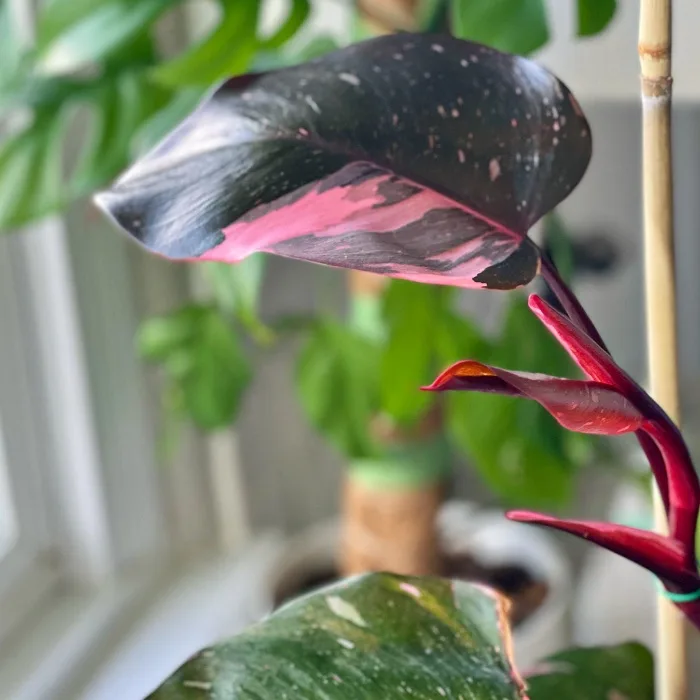
I received my Pink Princess as a gift from a generous friend. This plant was high on my wish list. I love it so much!
My Pink Princess needed some rehab. In this video, I discuss the problems my Pink Princess had when I received it and how I corrected the growing conditions to benefit the plant.
I also discuss the proper care for a pink princess. Watch my follow up video on this plant at the bottom of this post.
Why is my princess not pink?
My Princess has lovely strong and balanced variegation on the leaves. but this is not always the case with variegated plants.
If you are growing a Pink princess that has either never shown pink on the leaves or has lost its variegation here are some tips for you.
- When you purchase a Pink Princess make sure you see some pink on the plant leaves. The pink variegation is in the DNA of the plant. Avoid purchasing a pink princess plant that is mostly (or all) green. Look for some pink striping on the stems and pink showing on the leaves.
- The Princess needs more Bright indirect light than a solid green vine to bring out the pink colorations. This philodendron easily burns in strong direct light. Direct sunlight is way too strong for this plant.
- Variegation can be encouraged by increasing the indirect light to it. This will bring out whatever variegation the leaf can offer if the plant is healthy.
- If your plant is growing new leaves that are solid green, you may need to snip them off to encourage (or force) leaves with variegation. Not all of the plant parts will have the variegation so pruning off solid green leaves and stems with no striping encourages new growth. If the new growth has variegations you will have variegated Pink Princess plant once more.
- Some variegated Pink Princess plants will revert to green and never show pink in the leaves again. If the pink is not in the new plant growths DNA it cannot produce it. This is a risk for all variegated plants.
- If you have grown your Pink Princess from seed it is very rare to find the variegation in the grown plant. to ensure variegation you need a tissue cultured cutting from a variegated mother plant.
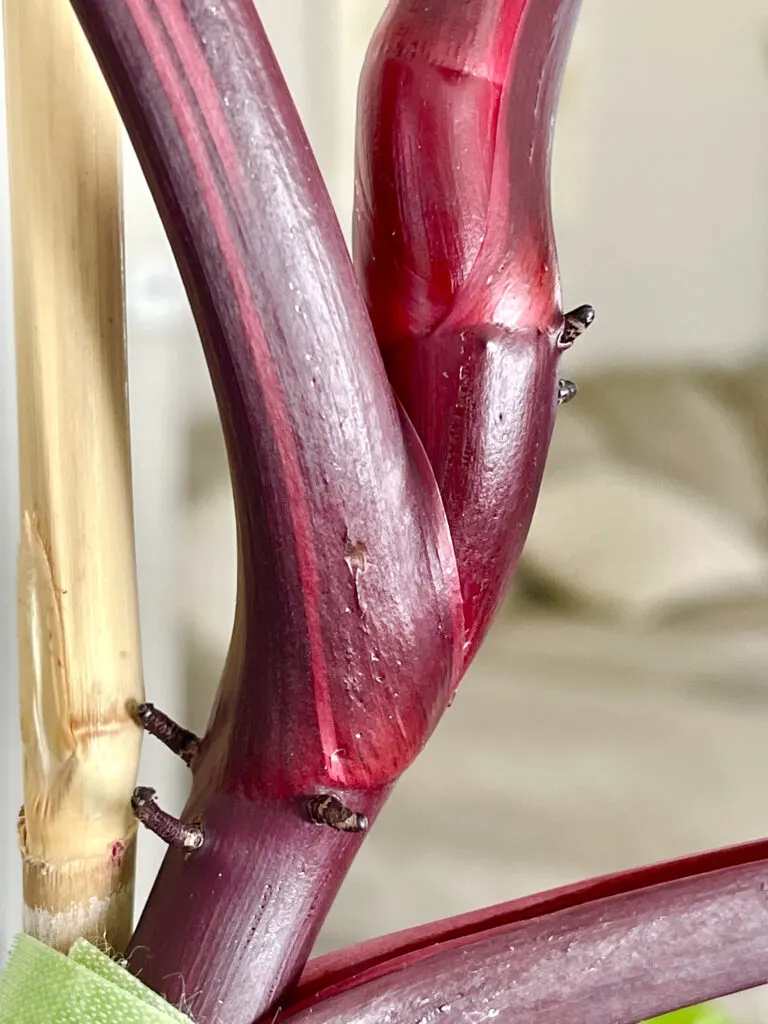
The striping on the stem pictured above tells you this stem will likely produce leaves with some variegation in them.
Balancing The Variegation on the Princess may mean you have too much pink on the plant. If the leaves are mostly pink or even solid pink they cannot sustain themselves.
Green leaves contain chlorophyll. Without enough chlorophyll the plant cannot feed itself though photosynthesis. You want to strike a balance between the pink and green so the plant can grow and be healthy.
This means you may actually need to prune off a solid pink leaf if the vine is looking sickly. No you don’t want solid green leaves either. Encourage leaves that express the pink but allow some green.
Why are Pink Princess Philodendron So Expensive?
The demand for pink princess is much higher than the supply. This keeps the prices for the pink princess plant elevated.
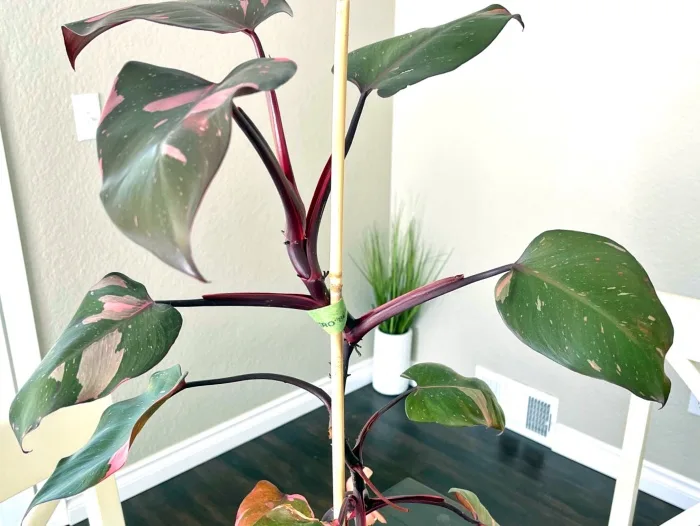
You can see the balance of variegation needed in this vine. Some of the leaves are more strongly marked in pink than others. But overall the plant has enough green to stay well fed through photosynthesis.
Why is the Pink Princess rare?
Mass producing the Philodendron pink princess plant does not work well. This plant is reproduced by tissue culture from a variegated mother plant to retain that beautiful pink variegation.
Nurseries have to cultivate the plants from a variegated pink princess plant, grow them up to see the variegation of the offspring and cull all the ones that don’t reliably reproduce the variegations Pink Princess is famous for. This keep the supply low and the prices high.
FYI: If you buy pink princess philodendron seeds and try to grow them yourself, you are very unlikely to grow a variegated princess. Most likely it will be a green philodendron.
The pink variegation is rarely found in seeds. to read more about growing seeds, on the off chance you’ll get a variegation, read about my experiment trying to grow variegated monstera Albo from seeds.
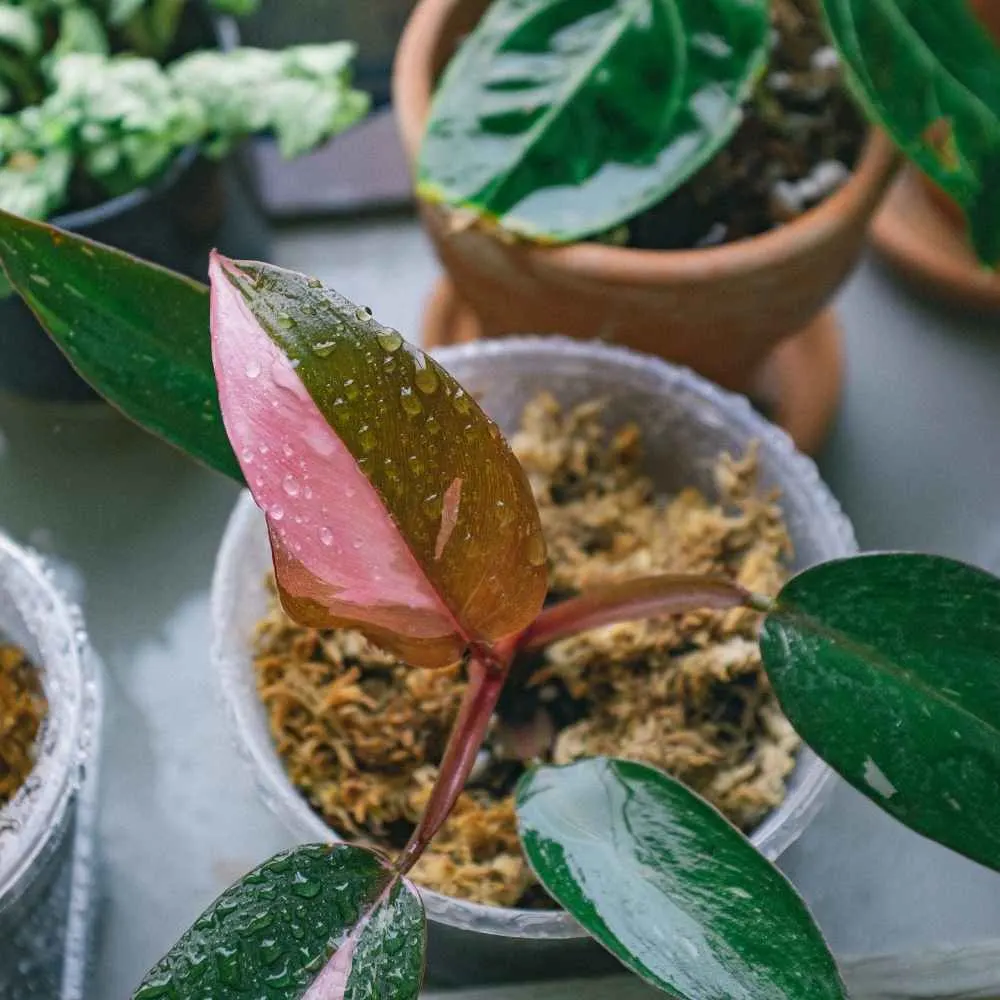
Where to Buy A Pink Princess Philodendron:
Sourcing a Pink Princess Philodendron is tricky. They are occasionally available at local garden shops. If you don’t see one your garden shop may be able to order it in.
Online you can buy one from Costa Farms when they come into stock.
We suggest you take a look at ETSY shops. These are often small family run shops. The well rated ETSY shops are experts at growing plants and safely shipping them.
Pink Congo Plant is NOT a Pink Princess:
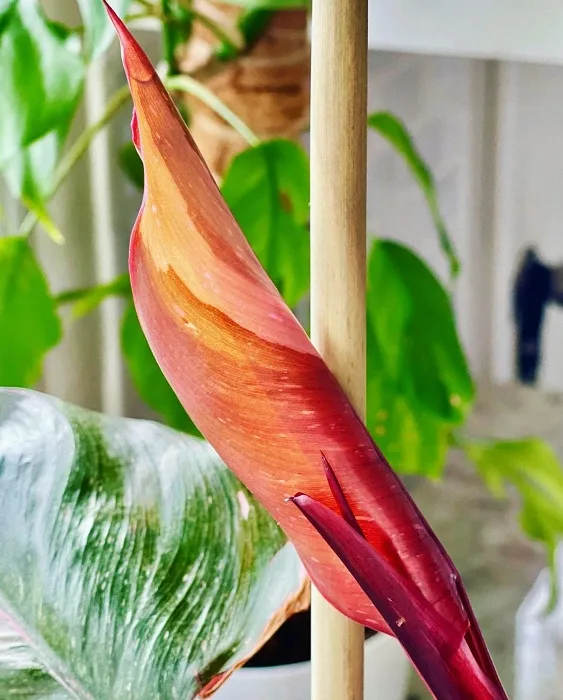
When you are looking for a pink princess philodendron you are likely to find a pink Congo along the way. These are very expensive fakes when sold as a rare plant. Do not fall for this scam.
A pink Congo is easy to distinguish from a Pink Princess. Its leaves are not naturally variegated. Instead the grower uses a chemical to turn some leaves pink.
This is a pretty plant. It is suitable for single occasion uses like weddings that need a themed plant for table and such. Or a gift for someone who will not keep it long term.
The pink Congo plant is usually sold at high prices comparable to the Pink Princess philodendron. The prices are not warranted. This is not a cultivation. Just a chemical trick.
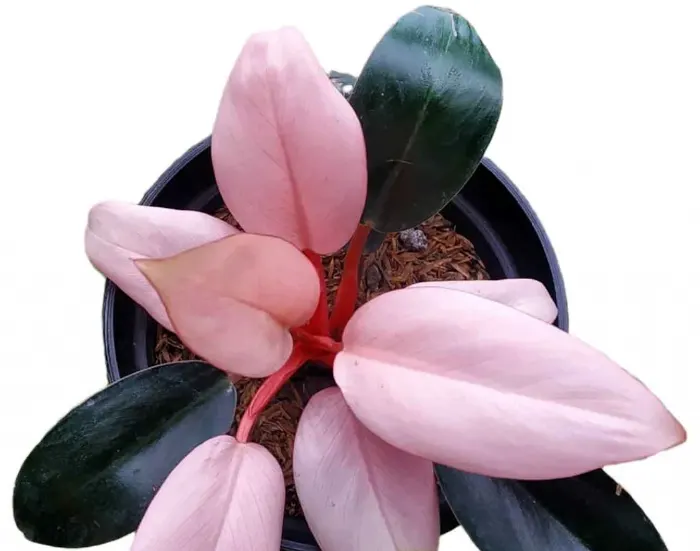
The pink coloring you see on these plant leaves is not natural and will not last. The leaves will eventually revert to green and the plant cannot grow new pink leaves. In fact, as you will notice in the plant pictured above one of the leaves is already returning to green at the tip.
If you are looking for a long lasting reproducible pink and green plant, choose the pink princess.
Plants are very beneficial to people emotionally and as an environmental addition to your home.
Read more about why houseplants are beneficial to people here .
The Contented Plant
Pink Princess Philodendron Care:
This is an aroid. It has the same care needs as the Golden Goddess philodendron and the variegated Philodendron Burle Marx and many other tropical plants.
Here is a quick guide to some basic information and care tips for the philodendron Pink Princess plant. Bright Indirect light, good soil and correct watering are the key to success with the philodendron pink princess.
| Familiar Names: | Pink Princess Philodendron |
| Scientific Name: | Philodendron erubescens |
| Plant Family: | Araceae |
| Care Difficulty: | Moderately easy |
| Temperature: | 65 to 85 degrees |
| Watering: | Water regularly and keep the soil evenly, lightly moist to slightly dry. Thoroughly soak the soil occasionally to allow excess salts to flush out. Drain soil very well. Constant overwatering causes root rotunda encourages fungus gnats. Inconsistent watering can cause yellowing leaves. |
| Humidity: | Like most Aroids the Pink Princess enjoys high humidity. Supplement your humidity when it gets under 45% to avoid brown leaf tips. |
| Soil: | Well draining soil is necessary for the pink princess. We use 2 parts potting soil to 2 parts perlite to one part orchid bark. |
| Lighting: | Pink Princess requires Bright indirect light 6 to 8 hours a day to show its best colors. Variegation will fade in low lighting. Harsh direct light will cause leaf yellowing and burning. |
| Fertilizing: | Feed the Pink Princess monthly during the growing season. Let it rest when dormant. |
| Growth: | Pink Princess is a slow growing vine. It grows to 4 feet tall (or more). This vine needs a trellis, stake or Moss Pole to keep it upright. |
If you want to dig deeper into the proper care of Pink Princess Philodendrons, read our more detailed care guide below.
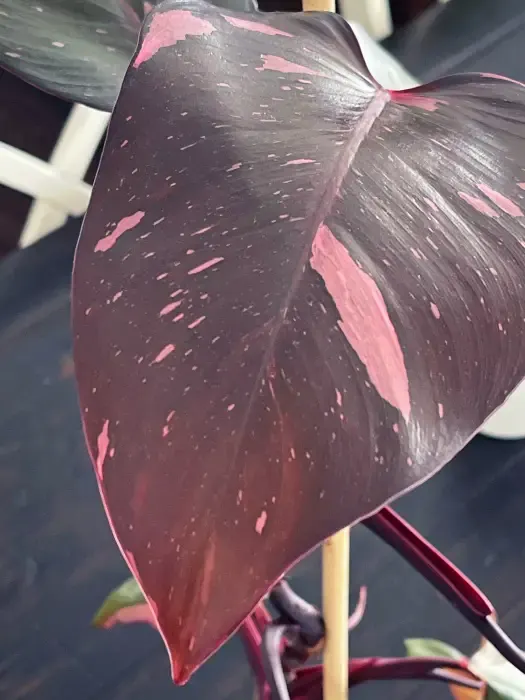
Here is our detailed and printable Pink Princess philodendron care guide. It’s not a difficult plant to keep happy. Just learn its needs and give it what it requires. It will reward you with years of delightful pink and green life in your home. Happy Planting!
Philodendron Pink Princess

The Pink Princess philodendronis a stylish plant with large heart shaped glossy leaves with splashes of pink variegation.
This lovely philodendron grows to about six feet tall as a houseplant as a vine. It can be trained onto a moss pole or staked..
This Care Guide will teach you how to keep this tropical Aroid happy all through the year.
Materials
Instructions
Soil Preference:
- This aroid requires a light soil.
- A mix of potting soil, perlite and orchid bark will keep the roots happiest.
- Here is our mix.
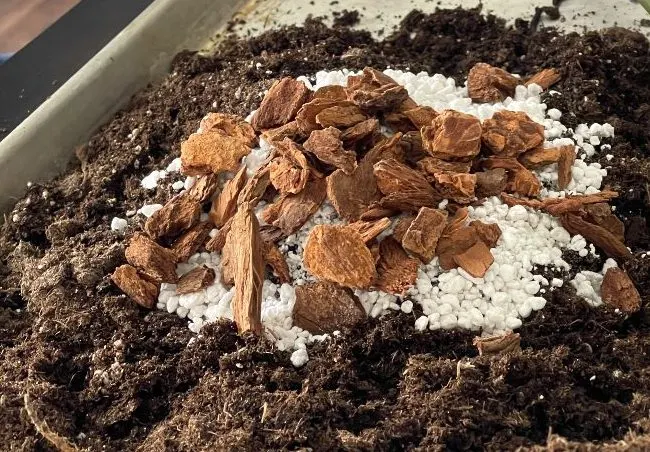
- Two parts potting soil to two parts perlite to one part orchid bark.
- A heavy soil potting mix is not recommended for aroids.
Pot Size and Type:
- If you want to encourage faster growth choose a pot about 2 inches wider in diameter than the current pot. Be SURE it's not too big or small for the root ball. (Refer to video)
- Any well drained pot can be used. It MUST have drainage.
- Repot every second year or when roots come out the drainage holes on the pot bottom To the next pot size up.
- Don't jump to a huge pot from a small one unless you wish to encourage faster growth. Just go to the next size up pot.
Lighting:
- The variegated burle marx enjoys bright indirect.
It will tolerate lower indirect light it if has some brighter moments in the day. - Some filtered sunlight from a window will be appreciated.
- Shield this aroid from strong direct light in summer south and west sunny windows. The leaves will burn.
- Tip: Window sheers or blinds can offset some brief periods of high direct light.
Watering:
- Water your plant when the soil is dry. Aroids do not like to be overly wet. Try a watering schedule of every other week.
- Watering is best done on a regular schedule so the plant is not over or under watered. Both can cause stress on the plant.
- This tropical plant enjoys humidity. In dry climates this Philodendron will thrive with a humidifier nearby. OR use a pebble tray under the pot filled half way with water.
- In dormant winter months reduce watering to when the soil is dry.
- Never let this plant get wet feet. Water when the top 2 inches of soil are dry. If the soil is compacted the bottom of the soil can remain wet which encourages root rot. Heavy wet soils attract Fungus Gnats.
Humidity:
Like most aroids, the pink princess hydrates through its leaves as well as roots. If your humidity is too low the leaf tips and edges can turn crispy and brown.,
Keep your pink princess at over 50% humidity. Even higher if you can.
Pebble trays, plant groupings and humidifiers all help raise humidity.
How to Fertilize:
- Apply a good quality fertilizer (linked in materials) monthly through Spring and summer.
- Decrease feedings by late Fall and allow the philodendron birkin to rest through the winter months.
Temperature:
- Keep the plant at a low of 65 Degrees F. to upward of 85 Degrees F. It enjoys warmth and humidity.
Table Top Plants:
- It’s easy to prune and shape these plants to whatever length and fullness you desire.
- Since the plant is slow growing it can look right at home on a table for quite a while.
- When it grows up too high to look balanced on a table either cut it back or set it on the floor to decorate a corner.
Pests:
- The Pink Princess is not fussy and resists pests. However all plants can get attacked by pests.
- Stress by longterm overwatering, poor light, extreme temperatures and soil conditions are contributors to plant stress..
- Spider mites, mealy bugs, scale, thrips and whitefly are the most common houseplant pests you will see.
- Read our post on The Seven Most common plant pests for more on how to identify pests and repair pest damage on your plants.
- To minimize the possibility of pests be sure to check all nursery plants before bringing them home. Do NOT purchase plants with pests. You are going to infect other plants in your home.
- Quarantine all new plants until you are sure no pests live in them.
How to Propagate:
- Propagation is easily done through leaf node stem cuttings.
- You need a 3 to 6 inch leaf stem with a couple of nodes and healthy growth.
- The nodes are easily seen as the bulges at the base of the leaf stem where it attaches to the vine.

- Cut a section of stem from the mother plant. make your cut in between the leaf nodes.
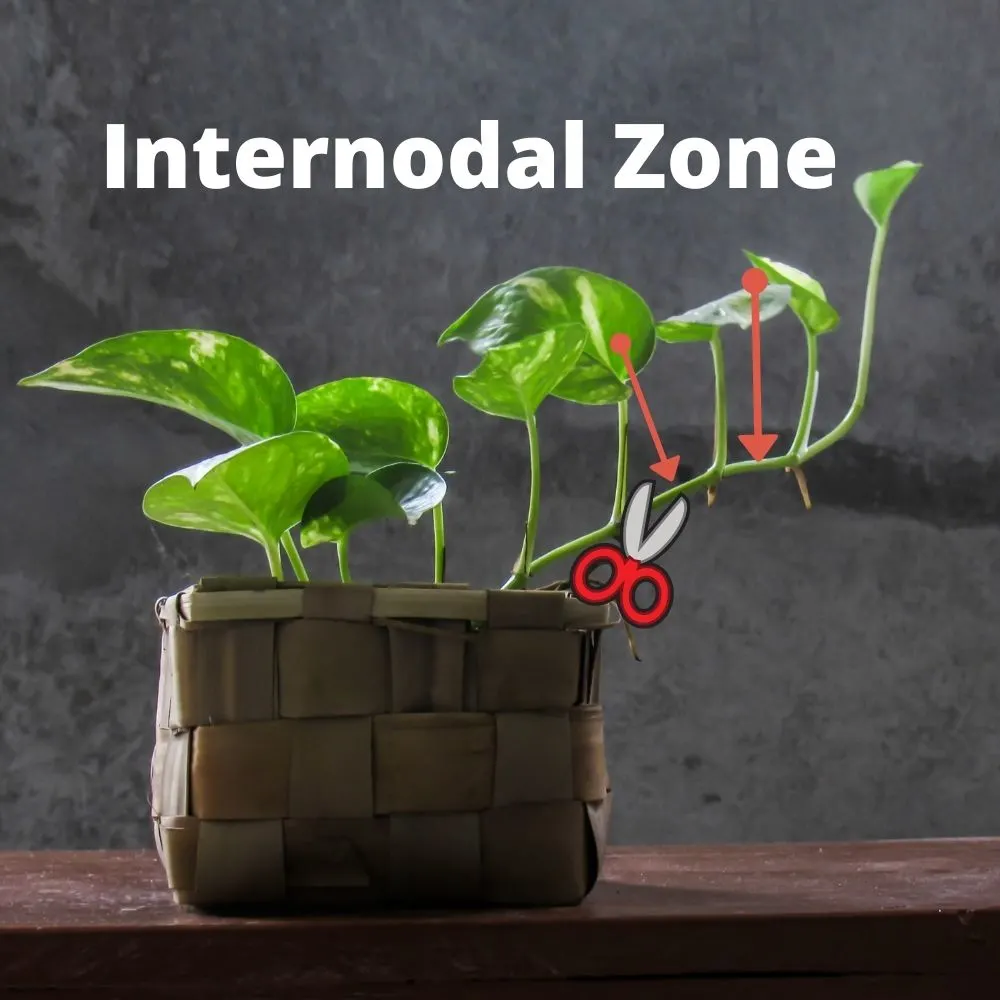 . you will often see arial roots growing out of the nodes.
. you will often see arial roots growing out of the nodes.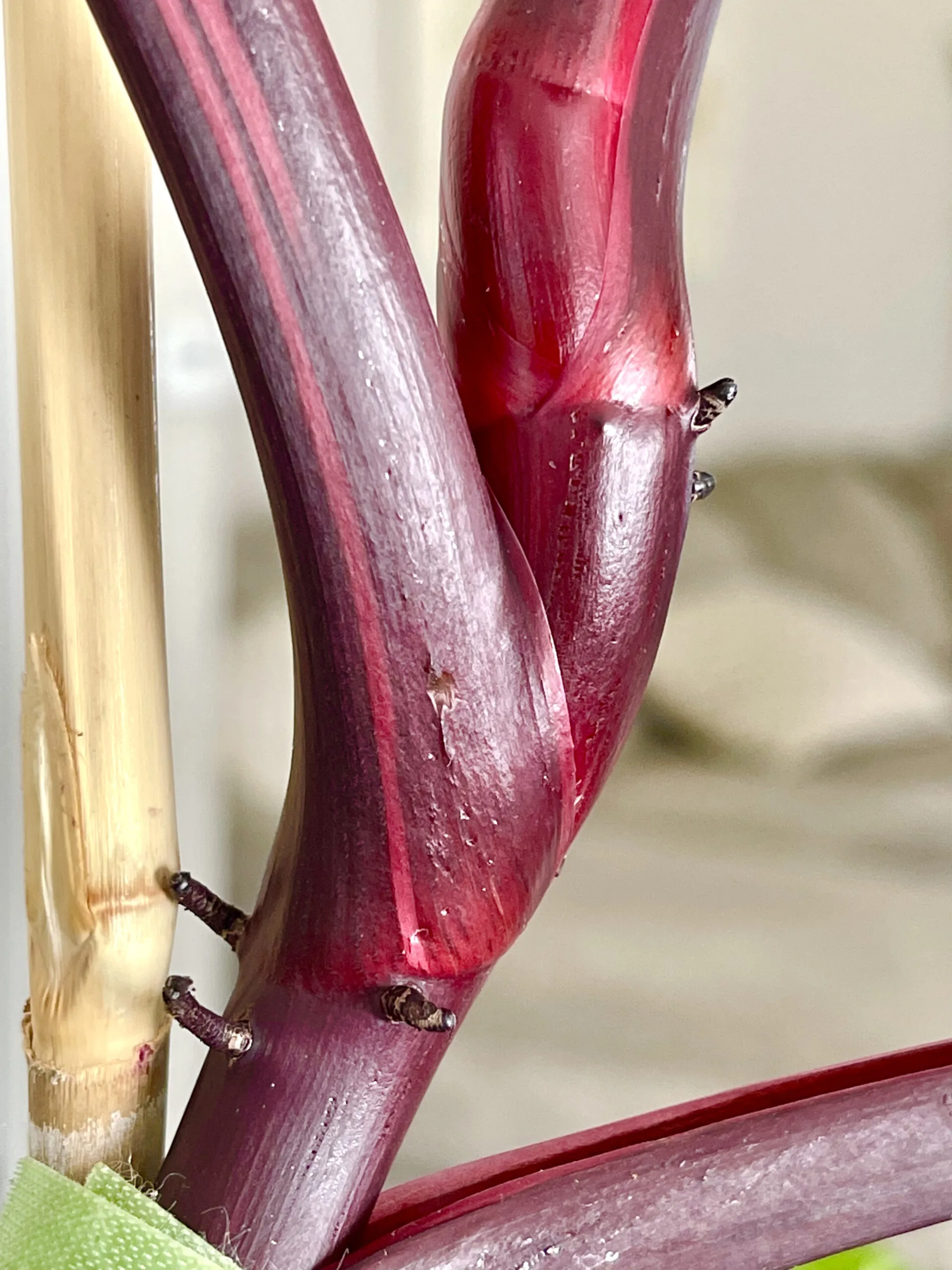
- Place the node into a jar with water. Use tap water that has settled 24 hours in the jar to dissipate chemicals harmful to the philodendron.
- Set the jar in a well lit area.
- After several weeks roots will grow. Allow the roots to get an inch or more in length.
- Plant gently and firmly into pot with proper soil mix.
- Make sure to keep the soil moist until the roots begin to set into the soil.
Notes
I have two videos on the Pinnk Princess. Here is the link to the update video I did recently.
Related Content:
Follow Us:
Find us on YouTube, Instagram , Pinterest and TikTok! We love to Plant chat. We also comment, like and occasionally share your content to our daily stories. We’d love to see your plants. Share your joy in your houseplants. Happy Planting!
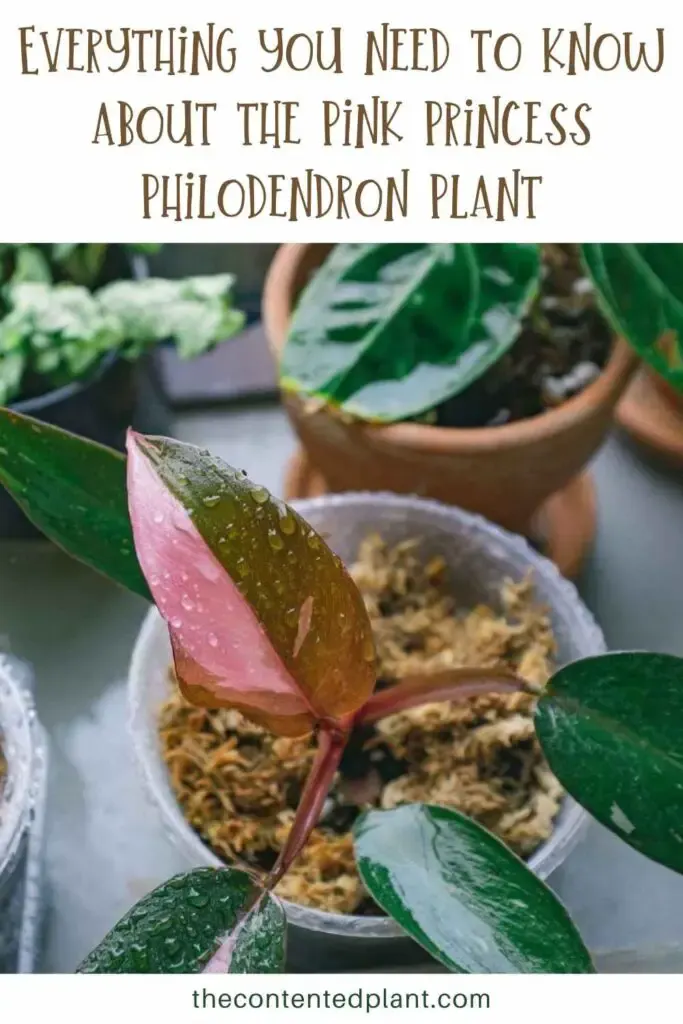

aroidsale
Monday 7th of November 2022
good and complete article, thanks for the information, I like it.
Diane Williams
Monday 14th of November 2022
You are so welcome. Glad we could help!
How to Grow Herbs Indoors - The Contented Plant
Friday 2nd of September 2022
[…] Pink Princess Philodendron […]